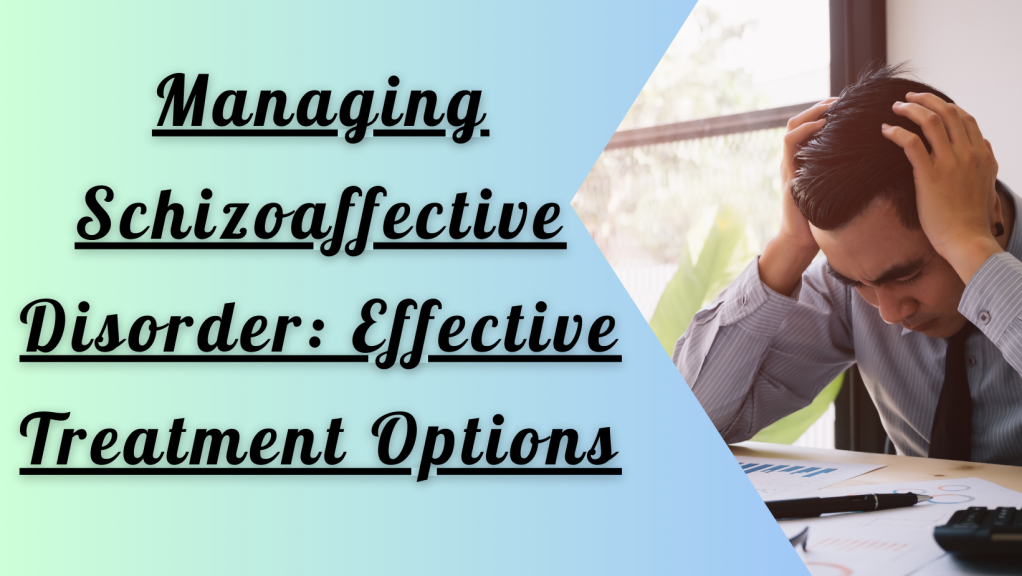Schizoaffective Disorder is a mental health condition characterized by both the symptoms of schizophrenia and mood disorders. This dual diagnosis can be particularly challenging to manage. However, there are a variety of treatment options that can help individuals manage their symptoms. We explore the most effective treatments for schizoaffective Disorder.
Medication
Medications are a vital part of successful Schizoaffective Disorder Treatment, and they can reduce psychotic symptoms, such as hallucinations, delusions, disorganized thinking, and mood symptoms. The primary class of medications used for this condition are antipsychotics, which work to reduce the severity of psychotic symptoms through a variety of mechanisms. Antipsychotics include haloperidol, fluphenazine, chlorpromazine, and paliperidone (Invega). Commonly prescribed mood stabilizers, such as lithium, may also help manage bipolar symptoms, while antidepressants may be used to address any co-occurring depression.
Cognitive Behavioral Therapy (CBT)
Cognitive Behavioral Therapy For Anxiety is a psychotherapy combining cognitive and behavioral therapy elements. CBT focuses on helping individuals identify and challenge thoughts, behaviours, and beliefs that may be contributing to their psychological distress. It is a goal-oriented therapy method, emphasizing the importance of the present and focusing on the present problem. CBT helps individuals recognize how their thoughts affect their emotions and behaviours and how those emotions and behaviours can impact their lives. Additionally, CBT can assist in identifying and managing triggers for symptoms and teach healthy coping strategies to manage them.
Family Therapy
Family therapy involves providing psychotherapeutic support to the families of people suffering from Schizoaffective Disorder. It has been proven effective in improving medication adherence, reducing relapse and rehospitalisation rates, and relieving psychiatric symptoms such as anxiety and depression. It can also help families better understand the condition and provide them with essential skills to cope with the Disorder. It can help decrease family conflict and improve communication between family members, which is crucial for successfully treating Schizoaffective Disorder.
Psychoeducation
Psychoeducation is another vital component of Schizoaffective Disorder Treatment. This type of therapy provides individuals with information about their condition and its associated symptoms and tips on managing them. Psychoeducation can help individuals better understand their Disorder and become more engaged in their treatment.
Life Skills Training
Life skills training is essential to treatment for individuals with schizoaffective Disorder. This type of therapy teaches individuals essential skills to help them cope with their condition, such as time management, budgeting, problem-solving, communication, and self-advocacy. Life skills training can help individuals gain more independence and control over their lives.
Hospitalization
Hospitalization may be necessary for individuals with schizoaffective Disorder if they are a danger to others or themselves, cannot live independently, exhibit self-injurious behaviour, and have a psychotic episode. Hospitalization can provide a safe environment for individuals to stabilize their symptoms and access intensive medical, psychiatric, and substance use disorder (SUD) treatment.
Conclusion
Schizoaffective Disorder can be a challenging condition to manage. Still, there are a variety of treatment options available that can help individuals to manage their symptoms and live a more fulfilling life. Medication, cognitive behavioral therapy, family therapy, psychoeducation, life skills training, and hospitalization are all potential treatment options for schizoaffective Disorder.

Leave a comment